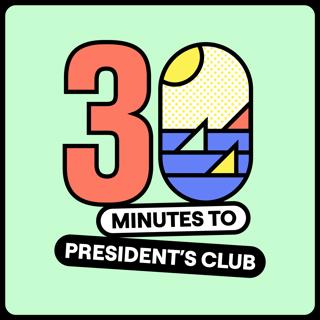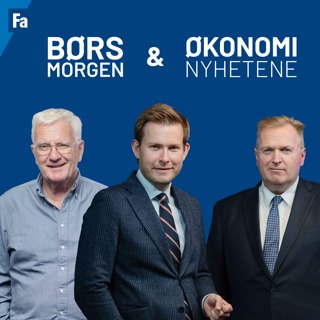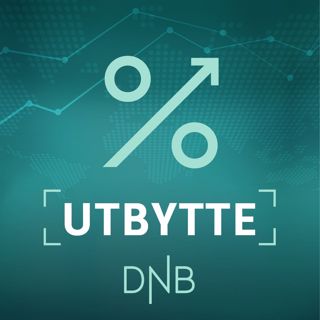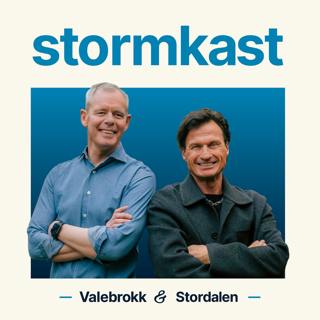
The No-Exception Rule That Every Sales Leader Needs to Adopt ASAP | Eleanor Dorfman | Ep. 278 (Lead)
ACTIONABLE TAKEAWAYS: SPFs for Short-Term Change: Use SPFs to drive short-term behavior changes. Long-term shifts should align with consistent metrics in your "iron square" framework. Strict Holdover Rules: Allow one quarter for closing open opportunities after a territory change if they’re past stage two. No exceptions ensure fairness and consistency. The Iron Square: Track rep productivity with win rate, AE-sourced pipeline, total pipeline generation, and forecast accuracy, with quota attainment as the central North Star. Customer-First Processes: Avoid letting internal rules disrupt customer experience. Build buffer zones in ROEs and territories to minimize deal handoffs. ELEANOR'S PATH TO PRESIDENTS CLUB: Head of Sales @ Retool Global Head of Commercial Retention & Regional Director of Commercial Sales @ Segment Global Head of Commercial Renewals and Retention @ Segment Head of Customer Success and Solutions engineering @ Clever Inc RESOURCES DISCUSSED: Join our weekly newsletter Things you can steal
9 Jan 42min
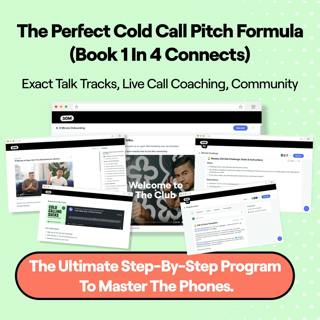
The Problem Proposition (Tone + Real Call Reviews) | Cold Calls to President's Club Course Preview Part 2
The cold calling course is here! (20% off with 20-OFF-YR1 before 01/10): https://clubpass.30mpc.com/cold-calls-to-presidents-club Actionable Takeaways The biggest mistake in The Problem Proposition: going through the motions instead of joining the pain. Join the ridiculousness of the triggering problem. Almost brush over your one-sentence solution. Shrug your shoulders during the interest-based CTA.
8 Jan 13min

The Problem Proposition (Methodology) | Cold Calls to President's Club Course Preview Part 1
The cold calling course is here! (20% off with 20-OFF-YR1 before 01/10): https://clubpass.30mpc.com/cold-calls-to-presidents-club Actionable Takeaways No Value Propositions. Buzzwords make you sound like a telemarketer, and benefits fall flat without the context of a problem. Triggering Problem. Instead, lead with a problem so specific that it triggers your prospect and reminds them of a painful memory. One-Sentence Solution. If you get the problem right, all you need is one sentence to explain your solution (we do X so that the problem goes away). Interest-Based CTA. Validate their interest before you ask for the meeting, using softening language, no-based questions, and mini push-aways.
8 Jan 17min
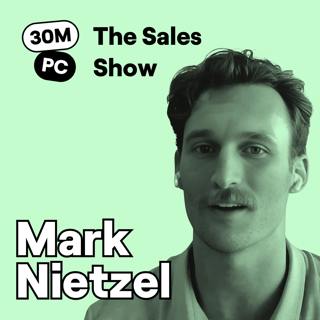
Why Most Salespeople Fail at Discovery Calls (And How To Fix It) | Mark Nietzel | Ep. 277 (Sell)
ACTIONABLE TAKEAWAYS: Set Multiple Agendas: Before showing a high-level demo, re-establish the agenda. Explain what you'll show, present it, then recap by tying it back to the meeting's outcome. Dangle the Carrot: Identify one problem to address in your demo, then ask for two or three more use cases. Use curiosity to uncover additional discovery points before diving into the demo. Anchor to an Outcome: Start the call by setting a clear decision-oriented goal, such as determining if further evaluation is worth their time. Be Blunt About Goals: In rip-and-replace scenarios, state the stakes directly, like weighing the pain of switching versus the potential benefits. This disarming honesty builds trust. MARK'S PATH TO PRESIDENTS CLUB: Commercial Sales Manager @ Procore Sales Manager, Emerging @ Procore Enterprise Account Executive @ Procore Senior Account Executive, Mid-Market @ Procore RESOURCES DISCUSSED: Join our weekly newsletter Things you can steal Michelle Cecil Episode
7 Jan 40min

Product Roadmap: Q1 2025 (Club Pass, New Club Member, Pipe Gen Teardowns)
RESOURCES DISCUSSED: Club Pass (Course & Community) Johnny Larson (New Club Member) Johnny's Past Episodes: Episode 1 Episode 2 Episode 3 Q1 Tactic Teardowns (Sales Nav, Pitch Script)
6 Jan 13min
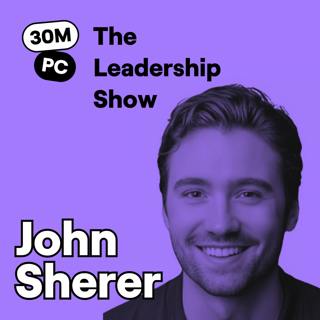
How to Measure Sales Team Metrics Without Micromanaging | John Sherer | Ep. 276 (Lead)
FOUR ACTIONABLE LEADERSHIP TAKEAWAYS: Simplify Dashboards: Skip filters and create pre-built reports for dashboards. It saves time and provides clearer insights without extra clicks. Trim CRM Fields: Remove unused CRM fields. If you’re not reporting on them or they’re filled with junk data, they’re just slowing you down. Analyze Mature Pipeline: For accurate win rates, focus on qualified deals created in earlier quarters. Allow time for deals to mature before assessing. Core Metrics Dashboard: Track four key metrics—intro meetings, late-stage deals, win rates, and inbound versus outbound pipeline. JOHN'S PATH TO PRESIDENT’S CLUB COO @ Growth Assistant VP of Sales @ Lattice Sales Director @ Lattice VP of Sales @ Appcues RESOURCES DISCUSSED Join our weekly newsletter Things you can steal
2 Jan 40min

The Top 15 Tactics from 2024
The top 15 sales tips shared on the podcast in 2024 (full episodes linked below) Prospecting Best Practices: "That's Exactly Why I Called" Response: Use objections as a reason to keep the conversation going (Sara Uy) Presuppose the Problem: Start with, "You've probably looked into X before, huh?" to reduce sales pressure and uncover nuance (Josh Braun) Call Yourself First: Test new phone numbers for spam labeling before dialing prospects (Ken Amar) Effective Email Structure: Combine business initiatives, industry trends, and triggers for personalized, resonant cold emails (Kyle Coleman) Heard the Name Tossed Around Opener: Open with network credibility, then focus on problem-centric pitches (from the "Cold Calling Sucks" book) Discovery & Sales Process Best Practices: Problem Storytelling: Turn problem agreement into a story by asking, "When did you realize this was a problem?" (Charles Muhlbauer) The 1–10 Feedback Question: Ask prospects to rate your demo and explore what would make it a 10 (Steven Bryerton) Don’t Mistake Activity for Achievement: Align sales stages with outcomes (Mark Kosoglow) Use Labels in Negotiations: Diffuse tension by labeling emotions, e.g., "It seems like you just want to get a good deal," to avoid triggering defensiveness (Chris Voss) Lead, Don’t Ask, Mid-Cycle: Overcome indecision by offering clear recommendations and removing irrelevant options (Matt Dixon) Leadership Best Practices: Invert the Hiring Funnel: Sell candidates on the opportunity first, then test skills later (Hiring Playbook) Disarming Transparency in Hiring: Share risks and weaknesses with candidates to surface objections early and build trust (Mark Kosoglow) 20/80 Training Rhythms: Spend 20% of the time introducing new skills and 80% reinforcing them weekly (Training Playbook) Pipeline Squeeze: Ask key questions (e.g., deal size, close date, buyer awareness) to assess pipeline health and socialize results (John Sherer) Document the Wiggle (W.G.L.L): Define "what good looks like," then practice targeted scenarios repeatedly for efficiency (Kevin Dorsey) Thanks sellers for tuning in this year! See you in 2025 with more of the most actionable tips in sales, be sure to subscribe to our weekly newsletter here.
31 Des 202425min

How to Ask BETTER Sales Questions | Charles Muhlbauer | 30MPC Hall of Fame
Enjoy this clip from episode 247 w/ Charles Muhlbauer ACTIONABLE TAKEAWAYS Instead of focusing on quantifying pain, ask deeper questions about the problem’s origins and previous solutions, this will naturally reveal the impact Find out if the problem is known and cared about across the company or just by one person Ask easy, non-pushy questions like “Why is that a problem?” to get the prospect to share the impact without feeling pressured Position involving decision-makers as beneficial for them, making it easier to get in front of power PATH TO PRESIDENT’S CLUB Founder @ DiscoveryCoach.io Sales Enablement Manager @ AlphaSense Lead Revenue Enablement Manager @ CB Insights Senior Sales Training Manager @ CB Insights RESOURCES DISCUSSED Join our weekly newsletter Things you can steal
30 Des 202410min
